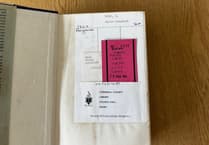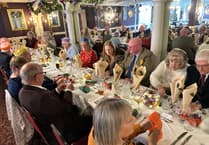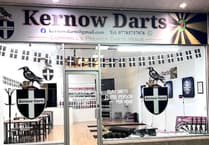THE Quaker Meeting House on Paul’s Terrace in Truro celebrates its bicentenary this week by opening its doors to the public, with interesting historic artefacts and a contemporary textile artwork on display for the occasion.
The Meeting House opened on October 21, 1825. Prison reformer and high-profile Quaker Elizabeth Fry was among those giving ministry; the West Briton reported how she and her sister “addressed the assembly in a very impressive and appropriate manner”.
The main benefactor of the plain Georgian-style building, which today is Grade II listed, was banker William Tweedy, who gave part of the garden of his family home Truro Vean (now Benson House) to the Religious Society of Friends.
The building has been little renovated over the past 200 years, so what exists today still has very much the flavour of a late Georgian space, enhanced by the small and peaceful burial ground where Tweedy and his wife now rest alongside their two daughters and their beloved pet dogs.
During the 1940s, the Meeting House was used by the pupils of Stoke Damerel High School in Plymouth, who were evacuated to Truro with their headmistress, a member of the city’s Quaker community.
Truro Quakers are taking this opportunity to exhibit artefacts and publications including books dating from the 17th century to the present day, unusual items relating to peace campaigns in Cornwall during the 1960s and ‘70s, and contemporary literature and images highlighting Quaker involvement in community and international concerns.
Meanwhile, the Loving Earth Project features more than 500 textile panels made by a wide range of participants from across the UK, and began as a response to COP26 to celebrate some of the wonderful things threatened by the growing environmental crisis.
Opening hours are between 11am and 3pm from Monday, September 29 to Sunday, October 5.
With thanks to Cornish historian Barry West for the historical research.




.jpeg?width=209&height=140&crop=209:145,smart&quality=75)
Comments
This article has no comments yet. Be the first to leave a comment.